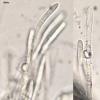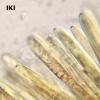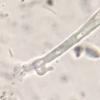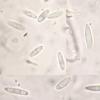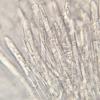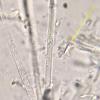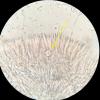
17-09-2025 10:50
Heather MerryleesHi there!I am hoping for any advice on the identif

27-11-2025 15:41
Thomas LæssøeSpores brownish, typically 4-celled; 26.8 x 2.4;

27-11-2025 12:01
Thomas Læssøehttps://svampe.databasen.org/observations/10496727

27-11-2025 11:46
Thomas Læssøehttps://svampe.databasen.org/observations/10493918

27-11-2025 11:31
Thomas LæssøeCollectors notes: Immersed ascomata, erumpent thro

23-09-2025 13:31
Thomas Læssøehttps://svampe.databasen.org/observations/10534623

25-11-2025 14:24
Thomas Læssøehttps://svampe.databasen.org/observations/10490522

26-11-2025 18:13
The entire run of Mycotaxon is now available throu
Dasyscyphella nivea?
Ethan Crenson,
30-10-2025 03:53
Hi all,
I would like an opinion on whether this can be definitively called Dasyscyphella nivea.
Marginal hairs are septate and have granular roughening on the lower parts, but are smooth at the ends. The ends slightly inflated, up to 3.3µm wide.
Asci: IKI+, with (I believe) croziers, 47-55 x 3.9-5.1µm
Spores hyaline, fusiform, 5.6-8.8 x 1.7-2.5µm
Paraphyses somewhat lanceolate up to 2.8µm wide.
From a hardwood branch on the ground, probably Oak.
Apoogies for the poor photos.
Ethan
Michel Hairaud,
30-10-2025 10:10

Re : Dasyscyphella nivea?
Hi Ethan,
The genus Dasyscyphella is for sure correct.
Did you notice any crystal in the hairs ? D. nivea , which is fairly common in Europe on the underface of hard logs, genrally shows such crystals.
Amitiés. Michel
The genus Dasyscyphella is for sure correct.
Did you notice any crystal in the hairs ? D. nivea , which is fairly common in Europe on the underface of hard logs, genrally shows such crystals.
Amitiés. Michel
Ethan Crenson,
30-10-2025 23:33

